Latest Posts
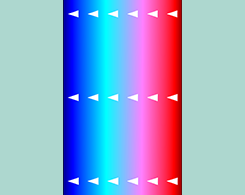
Exploring the 4 Basic Modes of Electrophoresis
Zone electrophoresis, moving-boundary electrophoresis, isotachophoresis, and isoelectric focusing. In most cases, the physics of new electrophoretic methods can be related back to these 4 modes.
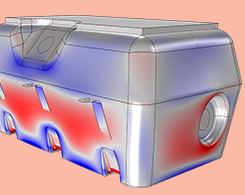
What Is the Best Way to Analyze Fuel Tank Vibration?
In a traditional approach for modeling a fuel tank, the fluid mass is dispersed through the tank’s wetted surface. A multiphysics method specifically models the acoustic pressure in the fluid.
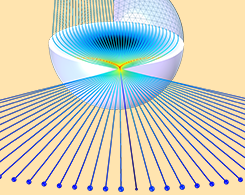
2 Video Discussions on Multiphysics Simulation of Optics and Photonics
John Wallace, senior editor at Laser Focus World, and Chris Boucher, technical product manager at COMSOL, discuss the use of multiphysics simulation in the optics R&D community. Take a look…

A Tour of the Famous Scientists Laid to Rest in Göttingen City Cemetery
Take a tour through the history of science at the historic Stadtfriedhof city cemetery in Göttingen, Germany, to learn about some of the greatest scientific heroes of the twentieth century.
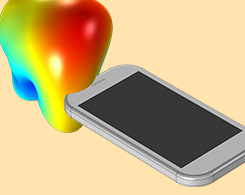
Computational Electromagnetics Modeling: Which Module to Use?
If you work with a particular electromagnetic device or application area, you might be wondering which module in the COMSOL product suite is right for you. Keep reading for a comprehensive intro.

Happy Birthday, Alice Ball
Alice Ball studied the chemical makeup of chaulmoogra oil to develop a treatment for leprosy. She is also the first African American, and first woman, to graduate from the University of Hawaii.
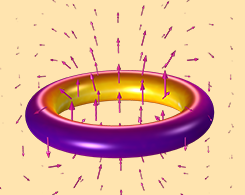
Course: Modeling Electromagnetic Coils in COMSOL®
Get an overview of our Learning Center course on modeling coils using COMSOL Multiphysics and the AC/DC Module, from setting up a coil model to analyzing electromagnetic heating and more.
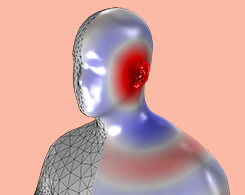
Computing the HRTF of a Scanned Geometry of a Human Head
Designing cochlear implants, hearing aids, headphones, and other audio devices requires precise measurements of the head-related transfer function (HRTF). Simulation and geometry import can help.
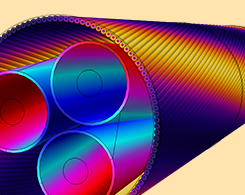
Using 3D Models to Investigate Inductive Effects in a Submarine Cable
It takes a modern desktop computer ~30 minutes to compute a 3D cable model with twisted magnetic armor. Consequently, 3D cable models are replacing empirical models in the power cable industry.
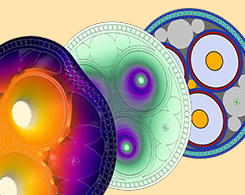
Modeling Cables in COMSOL Multiphysics®: 8-Part Tutorial Series
Your roadmap to modeling cables with the AC/DC Module and COMSOL Multiphysics®: An 8-part tutorial series that starts with the basics and gradually adds complexity and multiple physics.
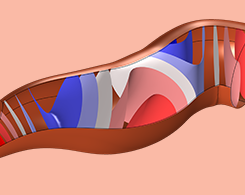
Modeling an Ear Canal’s Acoustics to Optimize In-Ear Audio Products
Ever notice an echo-like sound when wearing headphones or earbuds? Called the occlusion effect, this phenomenon can be studied using acoustics modeling to design better in-ear audio products.

3 Important Animals of Science from Throughout History
What do a bunny, mouse, and part-Samoyed terrier have in common? We discuss these 3 noteworthy yet unlikely characters from the history of scientific research…
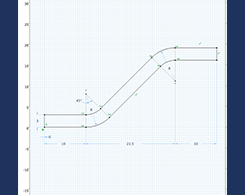
How to Use the Sketch Tools in COMSOL® to Draw 2D Geometry
Did you know that you can interactively draw and edit geometry right within the Graphics window in COMSOL Multiphysics®? Learn how to use Sketch mode with step-by-step video demonstrations.

Introducing the Porous Media Flow Module
From multiphase transport and non-Darcian flow to local thermal equilibrium and nonequilibrium, we discuss the advanced porous media flow modeling you can do with the Porous Media Flow Module.

Why Is My Coffee Maker Smiling at Me? Pareidolia Examined
A coffee maker smiles at you. A mop looks grumpy. The side of a building looks surprised. The phenomenon of seeing faces in inanimate objects, pareidolia, is more common than you might think…
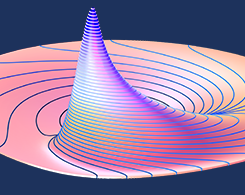
Exploiting Hardware Parallelism with COMSOL® Batch Sweeps
What is a batch sweep? How do I set up a batch sweep for my model? How much batch parallelism can COMSOL Multiphysics® exploit? We answer these questions and more…

Introduction to the Elastic Waves, Time Explicit Interface
From nondestructive testing to seismic wave propagation in soil and rock, there are many application areas that involve the propagation of elastic waves in solids and vibrations in structures.

Gaining Understanding of Complex Phenomena with Virtual Laboratories
Virtual laboratories make complex scientific phenomena accessible for students. See examples from the University of Hartford, Virginia Commonwealth University, and the University of Dayton.
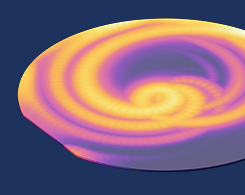
How to Use State Variables in COMSOL Multiphysics®
As of COMSOL Multiphysics® version 5.5, you can use state variables to track the state of your model; affect other fields, such as material properties; and even implement hysteresis.

Modeling Heat Transfer in Thin Layers via Layered Material Technology
We answer some questions you may have about the Layered Material functionality in the COMSOL® software: What does it do? How do you update existing models? How do simulations benefit from it?
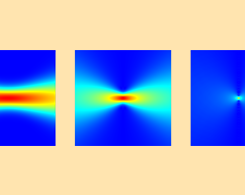
Evanescent Component of the Nonparaxial Gaussian Beam
The evanescent component of the nonparaxial Gaussian beam background field is available as a feature in the Wave Optics and RF modules as of COMSOL Multiphysics® version 5.5.

Happy Birthday, Cecilia Payne-Gaposchkin
In 1925, Cecilia Payne-Gaposchkin made a revolutionary discovery about hydrogen that unfortunately wasn’t believed at the time. This didn’t stop her from breaking new ground in astronomy.

Who Discovered the Integrated Circuit?
Like many of the world’s greatest innovations, credit for developing the integrated circuit is shared by many names, including Geoffrey Dummer, Jack Kilby, and Robert Noyce.
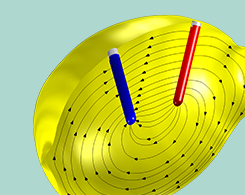
Approaching an Electrochemical Model from Scratch: Lemon Battery
The lemon battery: A high school chemistry experiment, and a great example when learning the general process for how to set up electrochemistry and battery models from scratch.
